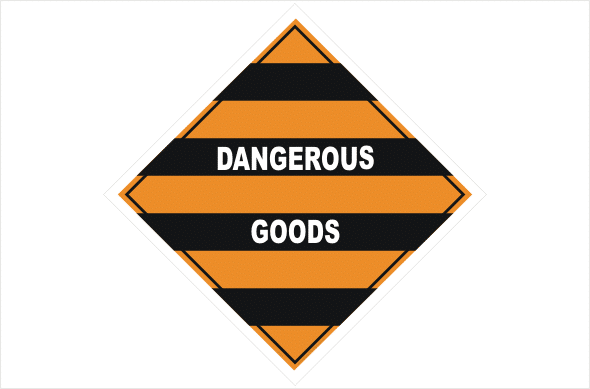The transportation of dangerous goods represents a critical segment in the logistics sector. Known for its stringent regulations and the inherent risks associated with the cargo, dangerous goods freight requires meticulous planning and adherence to safety protocols to protect public health, property, and the environment. This article delves into the complexities that define dangerous goods freight transportation and how businesses can navigate these challenges effectively.
Understanding Dangerous Goods Classification
Before assessing the intricacies of transporting hazardous materials, it is essential to grasp the classification system that underpins the regulation of these substances. Dangerous goods are categorised into various classes based on their properties and risks, ranging from flammable and explosive materials to toxic and radioactive substances. This segmentation is not just a theoretical exercise; it directly informs the kind of precautions and measures that transporters must observe.
Regulatory Frameworks and Compliance
Transportation of dangerous goods is heavily regulated at both the international and national levels. Companies involved in the movement of hazardous materials must be well-versed in the applicable laws and guidelines. For instance, the International Maritime Dangerous Goods (IMDG) Code and the International Air Transport Association (IATA) regulations set the standards for sea and air transportation, respectively. Compliance is not optional; it’s a necessity for legal operation and the mitigation of liability.
Specialised Equipment and Handling Procedures
The handling of dangerous goods freight demands specialised equipment and processes. Transport vehicles and containers must be designed to contain and control the hazardous materials in question. Furthermore, the individuals involved in the freight’s transit must be trained and certified, ensuring they have the expertise to manage potential emergencies and execute the handling procedures safely.
Logistical Challenges and Solutions
Navigating the logistics of dangerous goods freight is akin to steering through a minefield; the margin for error is slim. Detailed risk assessments must be conducted for every shipment, taking into consideration the specific characteristics of the goods, the route, the transit method, and storage requirements. Advanced tracking systems and real-time monitoring are becoming increasingly integral to maintaining control over the cargo throughout its journey.
Emergency Preparedness and Response
Despite best efforts, incidents involving dangerous goods can occur, necessitating a robust emergency response mechanism. Companies must have contingency plans in place, which could include spill containment measures, firefighting protocols, and medical emergency guidelines. Swift and effective response to accidents not only minimises damages but also demonstrates a commitment to corporate responsibility.
Insurance and Liability Considerations
Given the potential for high-impact events, insurance is a critical aspect of dangerous goods freight transportation. Policies must reflect the unique nature of the cargo and cover an array of potential scenarios. Moreover, liability can extend to multiple parties, emphasising the need for comprehensive insurance coverage to protect all involved entities against claims arising from hazardous materials incidents.
Impact of Technological Advancements
Technology is playing an increasingly pivotal role in enhancing the safety and efficiency of dangerous goods transportation. Automated systems for managing documentation, such as electronic manifests, and the utilisation of Internet of Things (IoT) devices for monitoring cargo conditions are just some examples of how the industry is evolving. Investment in these technologies not only aids in compliance but can also offer a competitive edge.
Global Trends and Best Practices
The dynamic nature of global trade and evolving regulatory landscapes makes staying abreast of current trends and best practices essential. Cross-border shipments of hazardous materials are a common occurrence, necessitating harmonisation of standards and collaboration between nations. Adopting global best practices ensures a unified approach to safety and a more seamless integration into the international marketplace.
Education and Advocacy
Education within the industry and advocacy for safety standards are paramount to the continued improvement of dangerous goods freight logistics. Stakeholders should be proactive in training programmes, industry conferences, and knowledge-sharing initiatives. Collective efforts to elevate safety can lead to the development of more stringent regulations, advanced technologies, and, ultimately, a safer transport environment.
Environmental Stewardship and Sustainability
The transport of dangerous goods directly intersects with environmental concerns. Companies must balance efficiency and compliance with their environmental responsibilities. Adopting green logistics practices, such as reducing emissions and planning routes that minimise environmental impact, is becoming integral to the industry’s sustainability efforts.
The Role of Specialised Freight Companies
Given the complexities involved, many businesses opt to engage with specialised freight companies adept at handling hazardous materials. These providers offer expertise and resources tailored to the world of dangerous goods, ensuring that all facets—from regulatory knowledge to emergency preparedness—are thoroughly addressed.
Conclusion: Safeguarding the Future of Freight
Safeguarding the future of freight, particularly when it involves hazardous materials, is an ongoing process that demands vigilance, expertise, and innovation. As regulations tighten and global trade expands, it is the collective responsibility of all stakeholders to ensure that dangerous goods are transported with the utmost care and professionalism. By investing in training, technology, and sustainability, the logistics industry can navigate the complexities inherent in dangerous goods freight and maintain public trust in its operations.







